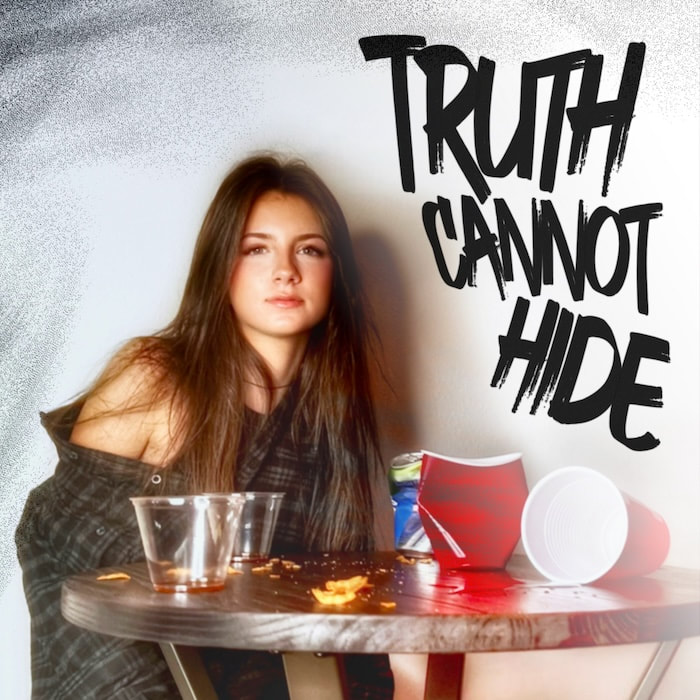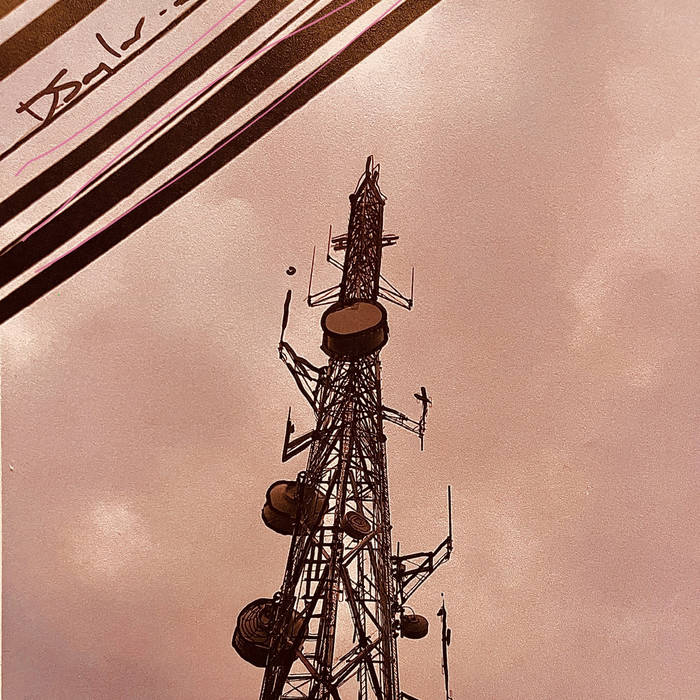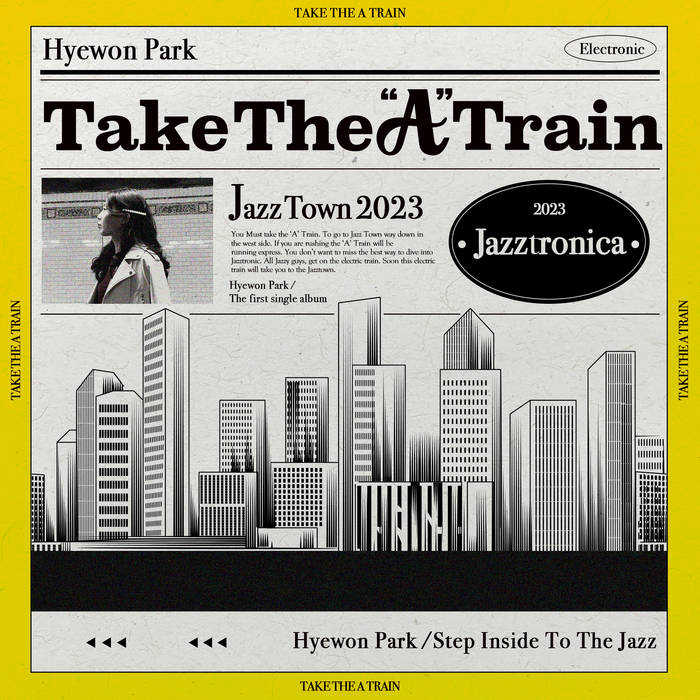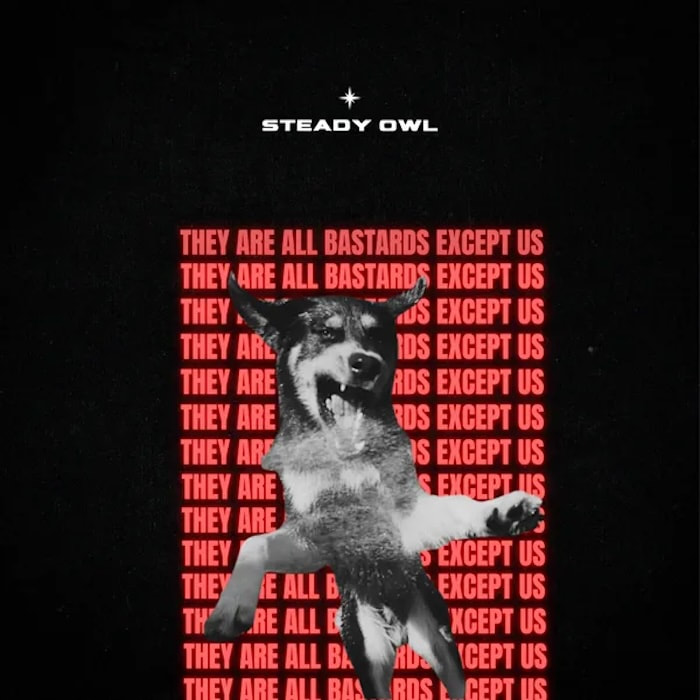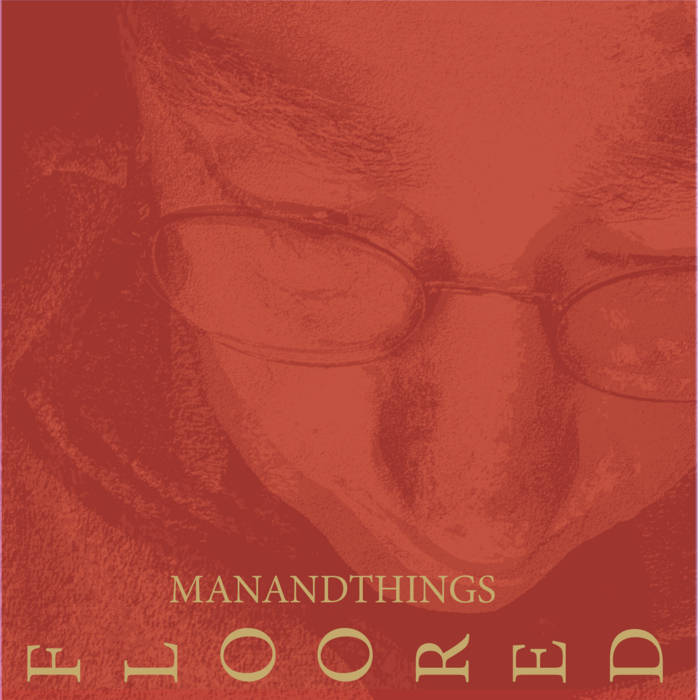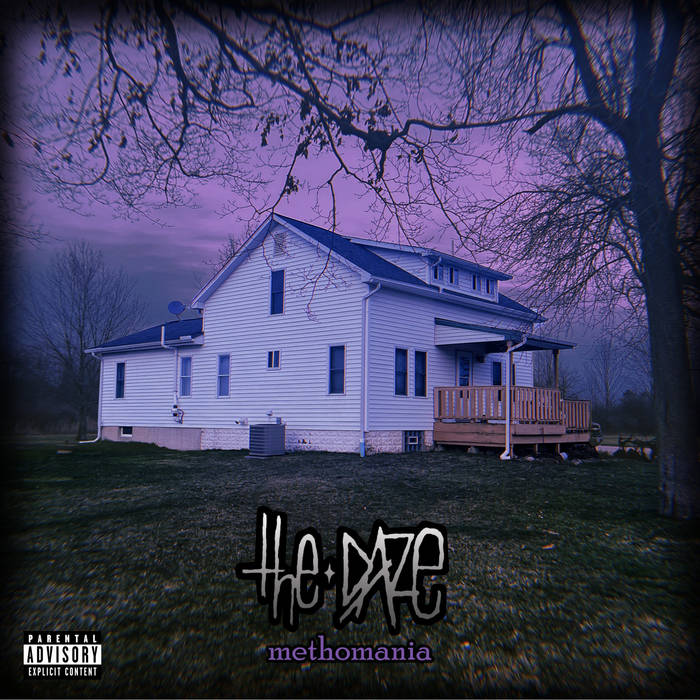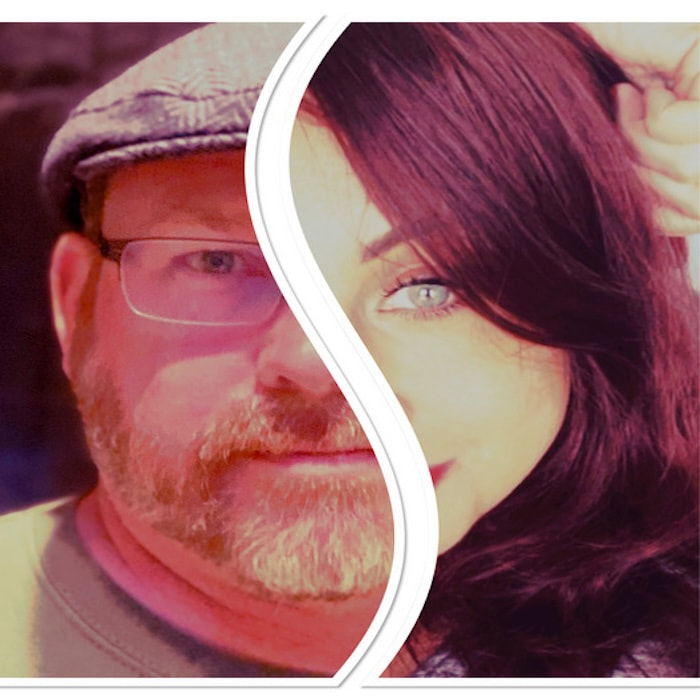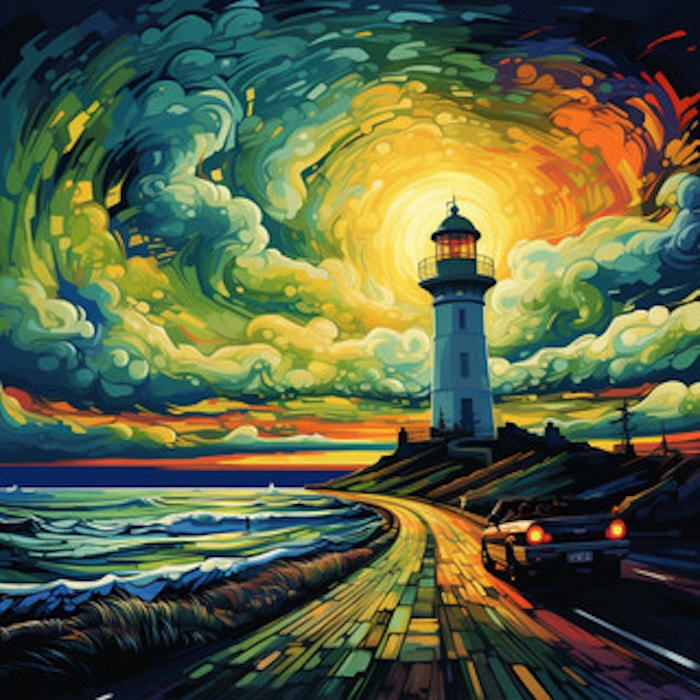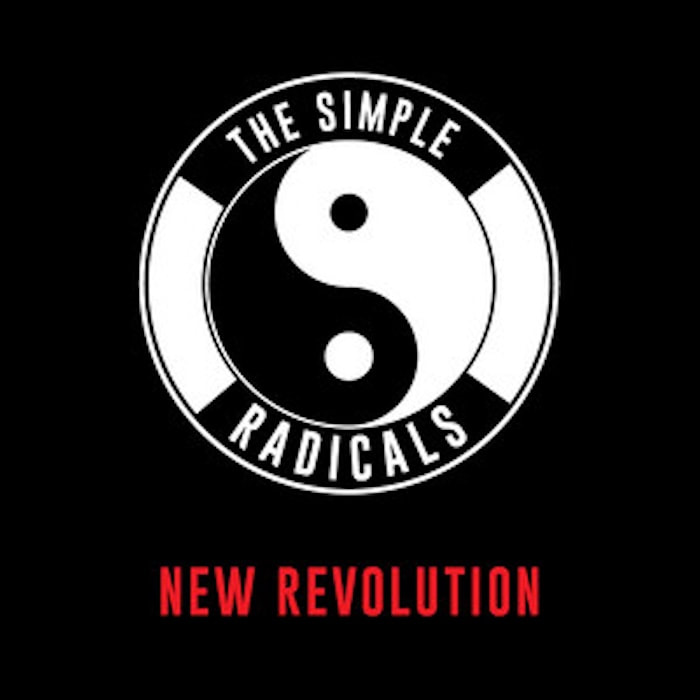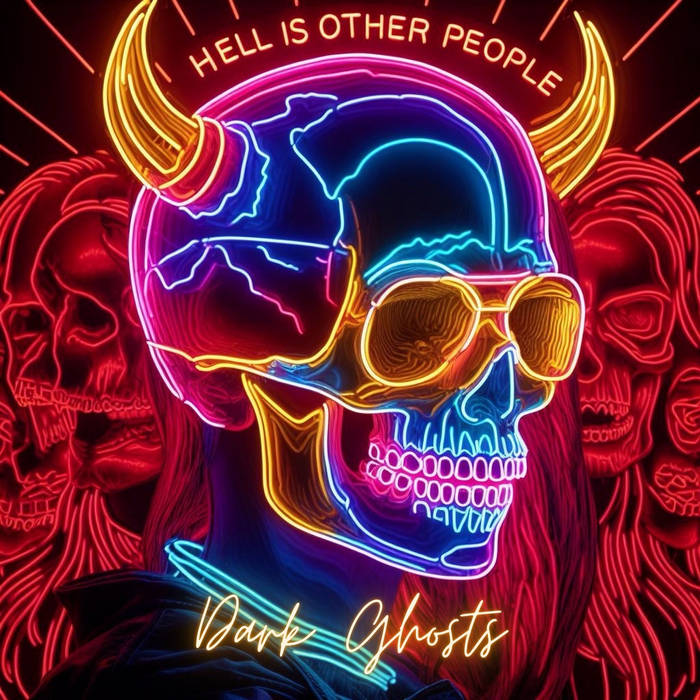|
Francesca Tarantino is a young passionate musician who revels in the world of rock. Her musical talent extends to singing, playing acoustic and electric guitar, She immerses herself in learning and mastering epic riffs, while also channeling her creativity into crafting original tunes.
A little over a year ago Tarantino unveiled her debut single ”My Runaway," followed by the release of "Tragedy" in May 2023. The recognition for her talent came swiftly, as she was crowned the 2023 Female Artist of The Year on the internet station, Music Mafia Radio. Both "My Runaway" and "Tragedy" achieved the remarkable feat of reaching number one on the station's Top 30 countdown and Top 20 Rock chart. Tarantino’s latest is “Truth Cannot Hide.” After listening I thought this was for the most part a pop song that is built on a rock foundation. Tarantino more or less sings about broad topics but she uses some language that will be more relatable for younger people such as using the word “boyfriend.” The song really goes for scale more than anything. It attempts to reach the highest peak it can maintain and is reminiscent of the rock opera days back in the ’80s. Tarantino sounds good on vocals but I got the feeling there’s more to explore for her here. There’s a subtlety I tend to hear with very experienced singers where that can get into different shades of emotion. Tarantino doesn't seem to be there quite yet but she has all the right foundation to build upon. This is a solid song overall and felt like it could be used in blockbuster type of movies. I look forward to hearing more from the artist who seems to just be getting started.
Become A Fan
0 Comments
D. Saylor is the artist name for David A. Saylor of Philadelphia, Pennsylvania. Saylor is a singer/songwriter, multi-instrumentalist and music producer who plays what he calls “slightly melancholy acoustic guitar-driven music.” His new (and possibly first) release is simply titled EP 1.
Saylor is another artist following a recent trend of presenting as little biographical material as possible, perhaps so that his music speaks for itself. Based on a single photo, he appears to be a relatively young man who lives in a castle-like home, likes Nirvana, grows his own food and possibly leans toward Christianity. Also he prefers his songs to be very short. Let’s see what his music has to say! The opening track “Balcony” is a dirge-like song built on acoustic guitar and keys. The arrangement melds a bit of George Harrison (“My Sweet Lord”) with Lennon’s autobiographical framing. Within the keyboard tracks there’s both retro-sounding patches and acoustic piano, and the percussion is fairly simple (I think I hear bongos and even one of those wooden fish you play with a stick). The lyrics are rather elliptical and a little creepy (“Oh child, are you sick? / I need this treatment, candles lit / and I wished you felt the same… you need your medication / You’re killing me”). If I had to guess I’d say the balcony is symbolic of the line between life and death (but I’m lousy at guessing!). “King and the Crown” is a more upbeat and cleaner-sounding folk tune, more within the Elliot Smith tradition. Though mostly minor chords with plaintive vocals, the overall sound has a pleasing jangle. Lyrically Saylor seems to be describing a troubled relationship using classic folktale imagery. “Lost and Found” has similar qualities, again describing the give and take of a romantic affair (or maybe the joy and sadness of life itself) but featuring a simple but very catchy chorus: “Hold on / Just hold on / but don’t hold on for too long.” Again the song itself has a powerful, delayed effect. The final track “In the Middle” is layered with string-like keys framing Saylor’s guitar and vocals. By now I’ve realized that Saylor doesn’t write chorus sections per se, instead having repeated vocal lines (“How long will you wait in the middle?”) and a bit more emphasis in his singing to delineate those sections. If the other songs were longer, I’d even call this track a “coda” as it states its purpose before closing with a short instrumental section. Though featuring four very short songs, this EP is a good indicator that Saylor has innate talent he should continue to explore, maybe with longer tracks or different arrangements. But this is an excellent start and worth a listen!
Hyewon Park, is a distinguished South Korean jazz pianist, composer, and producer. With an academic background at Berklee College of Music, Park stands as an accomplished undergraduate, having notably contributed as a composer for the Berklee Jazz Concert Orchestra under the direction of Greg Hopkins. Her accolades include the prestigious Berklee’s Annual Commencement Processional Composition Awards and the Clare Fisher Award from the Harmony and Jazz Composition Department of Berklee.
Not too long she released "Take the "A" Train." Park mentions “The "A" train had a meaning of bringing people from Harlem to the center of NY in the past. So, I arranged this song in the meaning of bringing myself, who is a jazz composer, to electronic music while keeping my musical identity as a jazz composer.” With a keen intent to bridge her jazz roots with the electronic realm, she navigates this transformative amalgamation while preserving her distinctive identity as a jazz composer. The song unfolds with a commanding beat, evocative horns echoing from a distance, and an intricate interplay of jazz-infused drums, bass, and piano. Instantaneously cinematic, the composition paints vivid imagery within the canvas of the listener's mind. The spotlight seamlessly shifts among lead instruments, showcasing a dynamic interplay. What grabbed me the most was the intricate fusion of genres, an exploration that takes center stage in "Take The "A" Train." The sub-bass beats inject an electric pulse into the composition, converging with a techno beat reminiscent of the rhythmic patterns found in jungle music. The composition's dynamism is a striking feature, oscillating between varying energies that ebb and flow throughout its duration. Towards the end of the song it creates a sensation akin to being whisked away, progressively descending down a tunnel until one reaches the metaphorical destination. Hyewon Park's "Take The "A" Train" stands out as a commendable testament to her prowess as a jazz composer venturing into the electronic domain. I look forward to hearing more in the not too distant future.
Become A Fan
Steady Owl emerges as the artistic alter ego of the self-proclaimed late bloomer, Roy Shrum, who, backed by his longstanding companions Jon Wiest on drums and Jeremy Cullum on keys, showcases a distinctive talent for crafting evocative songs adorned with intricate guitar work and a unique vocal signature.
The first song I listened to was "Moondog," where the initial notes enveloped me in a melancholic embrace. Echoes of Elliot Smith and Sufjan Stevens permeated the composition, albeit with a more pop-oriented flair. The vocals resonated seamlessly, transitioning into a chorus that transformed the track into a captivating pop/rock anthem. Its catchiness, flawless delivery and emotional depth left a lasting impression. Great song! "Between Door and Chair" surpassed expectations, grabbing me with a subtle touch of shoegaze aesthetics. The warm distortion, coupled with a pleasantly surprising hook, showcased a level of artistry that deviated from the anticipated path. The vocals, confidently delivered within a natural and comfortable range, complemented the well-executed lead guitar work, contributing to the song's allure. "Is It Too Late" embarked on a different vibe and style, commencing with the gentle strumming of an acoustic guitar that set an intimate tone. The song exuded softness, as if guided by a directive to play with the utmost lightness. The introspective ambiance evoked shades of early Radiohead, particularly in the nuanced guitar work. In this trifecta of tracks, Steady Owl adeptly unveils the multifaceted dimensions of their artistry, each piece providing a distinct layer to their signature sound. I felt like their music was polished, well delivered and very inviting. Take a listen and immerse yourself in the myriad hues of their sound.
Man And Things is the musical project of a man named Robert Ranaldi, a Canadian expat now living and creating on Long Island, New York. Man And Things has released many acclaimed albums, and the newest is called Floored.
Ranaldi sees himself primarily as a songwriter who happens to play guitar, and his original songs spring from an eclectic blend of pop rock seasoned with blues, jazz and folk influences. He writes and records all parts himself using both guitars and MIDI instruments & drums. The songs on this album were composed between 2016 and 2023 and tracked in Ranaldi’s home studio using Logic Pro X. “Soul Mole” starts with a big kick drum beat right up front, steadily hitting until you fear this may be the entire song! But Ranaldi soon reveals himself on guitar and bass, playing in a clean, jazz-influenced style. Echo-drenched keys and more percussion follow along. The track is built on a fairly simple riff upon which Ranaldi weaves subtle variations. I love how some instruments are bathed in reverb, while a guitar solo of sorts sounds like it was recorded with a mic right up against an amp with little to no effects. “Blue Cherries” continues the smooth jazz feel but with more of a live, small-combo feel. I love Ranaldi’s unusual voicings on his guitar leads, as the two main guitars here have a lively dialogue. With “First Train Leaving” the jazz club gets a little smokie with cool, off-kilter beats, standup bass, acoustic piano and dueling lead guitar melodies. The title track “Floored” feels to me both like classic jazz guitarist Wes Montgomery and the laid-back, jamming Beatles. The keyboard part is done with that “angelic voice” kind of patch, like an electronic backup singer. A beautiful track with lots of pleasing, unexpected changes. “Hazy” is one of the cooler tracks in that it’s a boogie that starts dark and becomes almost overloaded with organ-like keys, Beefheartian guitars and sax samples, then switches to a Beach Blanket Bingo vibe so quickly that I thought it was a new song! “Pushing Clouds” features acoustic guitars and live-sounding percussion, and is an excellent showcase for Ranaldi’s knack for creating interesting harmonic moments between his guitars. A very distant cousin might be Jimmy Page’s “Black Mountain Side” though the track here is much more lyrical. “The Bounce” does indeed have a bouncy beat with a main riff that recalls Paul Simon’s “Feelin’ Groovy” though Ranadi’s version also has cool synth interludes. Though new to me, it’s clear now why Ranaldi has been able to keep so many projects afloat with his amazing technique and wealth of ideas. Recommended!
Hailing from Jefferson, Ohio, The Daze emerged in the early months of 2020, a formation born out of camaraderie amidst the COVID-19 lockdown among a group of high school friends. Their musical identity traverses the realms of hard alternative and psychedelic rock, a sonic palette vividly painted across their debut studio EP, the "Red Mark EP." In their latest venture, the album titled "METHOMANIA," The Daze boldly embraces a fusion of psychedelic post-grunge, interwoven with distinct traces of Midwest emo, funk, and metal.
The lyrical landscape mirrors the instrumental complexity, delving into themes of alcoholism, addiction struggles, the tumultuous journey of growing up, heartbreak, and the omnipresent specter of anxiety. For a seasoned grunge enthusiast like myself, echoes of early Nirvana vibes resonate through their work, although it would be a disservice to pigeonhole their sound within that paradigm. Imagine intertwining the gritty allure of Queens Of The Stone Age with the sonic exploration of Ty Segall, and you start to grasp the captivating essence of The Daze. The album commences with "Falling for Nothing," an impressive opener characterized by a distorted bass groove that seamlessly introduces the band into a realm of sonic revelry. The vocals, akin to rays of light amidst a darker ambiance, contribute to the overall allure of the track. "Methomania" takes a bold leap, initiating with a nearly cartoonish explosion of hyperbolic sounds that eventually coalesce into a more grounded band dynamic. This fuzzy, adrenaline-fueled anthem navigates through layers of distortion, punctuated by moments of clarity, creating a rollercoaster of auditory sensations. The aptly titled "Pop Song for Heartbreak" is a paradoxically catchy tune, poised to be a crowd favorite despite defying traditional pop conventions. The band's versatility shines through in tracks like "New Wave War," exploring atmospheric dimensions, and "Pushing Triggers," which embraces a '70s funk groove wrapped in a psychedelic dreamscape. "Hymn of the Abyss" emerges as a personal standout, crafting an ominous atmosphere that beckons for further exploration within this stylistic vein. While "Rain" has its moments, "Lose This Feeling" stands out as an epic composition, showcasing the band's prowess in crafting emotionally resonant soundscapes. "Shoreline" exudes a dark, punk-inspired energy, paving the way for the band to conclude their sonic odyssey with the introspective and contemplative "Bleed Me Out." Despite their youthfulness, The Daze exhibits promising potential. As a seasoned music reviewer, the vocalist's raw talent resonates, underscoring the band's commendable initiation into the musical landscape. I eagerly anticipate witnessing the evolution of The Daze, as they undoubtedly possess the skill and promise to leave an indelible mark on the musical tapestry.
Ginger AF, a genre-blending ensemble, seamlessly melds rock, shoegaze and alternative elements, producing a weighty sonic experience reminiscent of a hybrid between My Bloody Valentine and early Smashing Pumpkins.
In their track "Slipping Away," the band launches with unwavering momentum, creating a sonic landscape where guitars and bass coalesce into sublime white noise blocks. The drum work, pulsating with kinetic energy, adds an adrenaline-inducing layer. The vocals, nestled in the mix in classic shoegaze style, offer a serene counterpoint to the cacophony, contributing to the song's overall allure. "Maybe Sometime" delves even deeper into shoegaze territory, evoking echoes of My Bloody Valentine. What sets it apart is the exuberance emanating from the vocals, which take center stage with a motivational and hopeful quality. It's a compelling and uplifting composition. "Seasons" takes a darker turn, accentuating higher frequencies to create a full, enveloping sound that surrounds the listener. The vocals, catchy and melodic, add a powerful dimension to the song. The track feels like a potent emergence of light from the depths of darkness. For aficionados of shoegaze, Ginger AF's offering is a treat. While remaining faithful to the genre's essence, the band elevates it with their unique touch. Each listen unfolds a nuanced sonic adventure, inviting audiences to immerse themselves in the distinctive world crafted by Ginger AF.
Become A Fan
Distorted Waves, the dynamic reggae/rock tandem helmed by Mark Cavanaugh and Preston Lewis, made their debut in 2023, injecting a breath of fresh air into the music scene. Melding an eclectic range of influences, the duo deftly fuses these elements, sculpting a contemporary reggae soundscape enriched with a vigorous rock essence. Drawing inspiration from luminaries like Mike Pinto, Joe Samba and Dale and the Z Dubs,
Distorted Waves brings a unique perspective to the intersection of rock and reggae, resulting in a musical encounter that resonates deeply with listeners. In their rendition of "The Ballad Of Johnny Butt," originally penned by Secret Hate and popularized by Sublime, Distorted Waves showcases their adeptness. The reggae undertones are palpable, interwoven seamlessly with rock elements. The vocalist's expressive delivery, marked by ever-shifting tones and inflections, adds a layer of dynamism to the track. "Imprisonment" kicks off with a slick groove, setting the tone for a captivating sonic journey. The subdued vocals, coupled with harmonies, create an inviting warmth. As the song unfolds, a rich assortment of instruments, including what seems like a marimba, builds anticipation. When the distorted guitars enter the fray, the track ascends to new heights, punctuated by a riveting guitar solo. In "The Foundation," Distorted Waves conjures another captivating groove, allowing listeners to immerse themselves in a lush and warm sonic atmosphere. The band ventures into unexpected epic heights, elevating the reggae genre with a magnetic allure. One can't help but sense that Distorted Waves is a force to be reckoned with in a live setting. Their music possesses an infectious quality that induces a mood of revelry and liberation, making it an experience worth immersing oneself in. Take a listen and let the waves of Distorted Waves carry you away.
The Simple Radicals is a retro rock band from the great blues and rock city of Chicago, Illinois, featuring John Malkin on lead locals and rhythm guitar and John Griffin on lead guitar and vocals. Together, they capture the passion and energy of their collective musical experience, with different tastes, sounds, and styles. The music they create is pure, visceral rock n' roll - poignant, from the heart, topical and direct.
The first song I listened to was “The Optimist” was a pretty straightforward 4/4 rock tune with distorted chords, a steady beat and a robust bass line. It’s a catchy tune and has some attitude. The guitar solo sounded like it came from the ’80s and I say that as a compliment. It’s a catchy and dynamic song and got me interested in hearing what else the band had on offer. The song “New Revolution” sounds like the title of the song. I think the band The Who captured this energy best in the late ’60s but The Simple Radicals have a more contemporary approach that felt more aligned with hard rock and alternative from the ’90s. The guitars cut through the mix like knives and reverb laced vocals sound fantastic on this hook. “Let’s See What You Got” opens with a very familiar and popular chord progression. The band does it justice and are able to go into syncopated Queens Of The Stone Age type of energy that gets your adrenaline pumping. I also loved not only the guitar work but the tone they got for it which was more a rockabilly sound. It works really well with the music. The catalog for The Simple Radicals goes way beyond these three songs but if you enjoy these songs I encourage you to dive deeper into their sound. There’s a lot to appreciate here. Take a listen.
In my collegiate days, I first encountered the profound notion of "Hell Is Other People" during a philosophy class. Originally coined by Jean-Paul Sartre, this phrase has transcended its philosophical roots, permeating our cultural landscape through memes, TV series, and numerous musical expressions, exemplified in Dark Ghosts' latest album bearing the same title.
This musical offering resonates strongly with the sonic ethos of 80's rock, epitomizing anthemic qualities that propel each track towards monumental crescendos. The album's production, transitions, and overall vibe evoke a tasteful modernization of the classic 80's rock flavor. "We're Still Young" is a high-octane symphony where potent guitars intertwine with synths, and colossal drums dominate. The infectious hook and impeccably executed guitar solo set the tone for the album. If you enjoy this song you will enjoy the entire album. Collaborating with Nieland on "Downside up," Dark Ghosts maintains the album's unrelenting energy. While the grandiose moments shine, the most inventive production arguably unfolds within the verses. "My Place in Hell" evokes Duran Duran in the verses and transformes into a hard rock/glam powerhouse reminiscent of Mötley Crüe during the chorus. A surprising nod to New Age emerges in a distinct section. A personal highlight, "Future Boy," manifests as sublime synth-pop that would seamlessly complement a cinematic experience. I could imagine this being used in the movie Drive. "HallowScream" infuses funk into its composition, accompanied by a distinct 80's midi sound, while "I Won't Give Up" morphs into an uplifting piano ballad. The contemplative and dark undertones of "Never After Midnight" emerge as another zenith in the album. Concluding the sonic odyssey is "Fantasma," an epic composition characterized by soaring guitar solos and a rock opera-like quality aspiring to reach the pinnacle of grandiosity. It's unequivocal that enthusiasts of 80's music will find solace in this album. While rock remains the predominant genre, Dark Ghosts effortlessly explores other genres with seamless precision, making Hell Is Other People a compelling album to explore.
|
Critique/insightWe are dedicated to informing the public about the different types of independent music that is available for your listening pleasure as well as giving the artist a professional critique from a seasoned music geek. We critique a wide variety of niche genres like experimental, IDM, electronic, ambient, shoegaze and much more.
Are you one of our faithful visitors who enjoys our website? Like us on Facebook
Archives
May 2024
|

